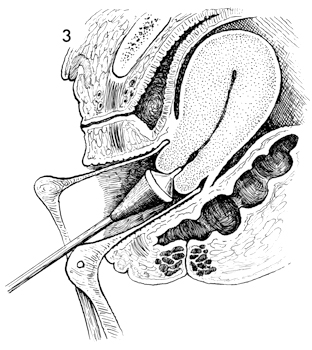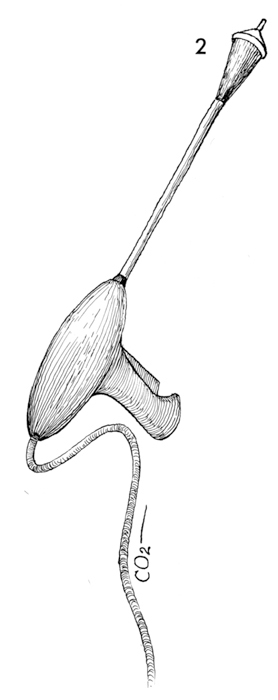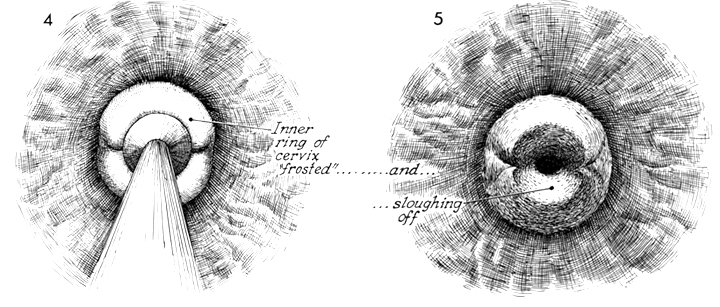
![]()
Directed Biopsy of the Cervix at Colposcopy
Endocervical Curettage at Colposcopy
Conization of the Cervix by the Loop Electrical Excision Procedure (LEEP)
Abdominal Excision of the Cervix Stump
Correction of an Incompetent Cervix by the Shirodkar Technique
Correction of an Incompetent Cervix by the McDonald Operation
Cryosurgery of Cervix
The introduction of cryosurgery as a means of treating lesions of the cervical os has been useful to gynecologists. Two cervical lesions that can be managed by the cryosurgery are: (1) benign erosion of the cervix and (2) early neoplasia of the cervix. Most authorities feel that the role for cryosurgery in carcinoma of the cervix is limited.
The cryosurgery technique is based on introducing a rapidly expanding gas, such as carbon dioxide or nitrous oxygen, through a metal cone-shaped instrument that fits the area which is to be frozen. The swift expansion of the gas under high pressure quickly decreases the temperature of the metal cone and thus freezes any tissue in contact with the instrument. The freezing process destroys the tissue and allows healing by re-epithelialization of the cervix.
Points of Caution: Timing of the freeze and the degree of temperature are critical. It is theoretically possible to freeze the entire cervix and lower uterine segment.
Adequate thawing should be allowed prior to disengaging the cryo probe from the cervix to prevent tearing the cervix that may result in hemorrhage.
Technique

Appropriate pelvic and cervical examinations are performed, including Papanicolaou smear of the cervix and, if indicated, a cervical biopsy and / or colposcopy to rule out invasive, malignant disease.


The appropriate cone is selected and applied to the cryosurgery instrument.
The cone is applied to the portio of the cervix, and if the endocervix requires freezing, the tip on the cone is inserted into the endocervical canal.

The cervix is frozen for 3 minutes. If severe cervical erosion and / or neoplasia exist, the cervix is normally thawed for 2 minutes and the instrument reapplied for 2 additional minutes of freezing.
After the instrument is removed, the cervix appears as an indented, "coned-out" frozen area. For approximately 2 weeks following therapy, the patient will notice a copious watery vaginal discharge which is generally controlled by vaginal douching.